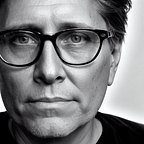The Cognitive Canvas: AI’s Role In Reshaping Artistic Creativity
The canvas and the colors are merely facilitators, invited to participate in a cognitive dialogue.
GPT Summary: The emergence of AI, specifically GPT, is revolutionizing creativity by shifting the focus from craft to cognition, allowing individuals to conjure genius ideas and express them through a new medium that understands, learns, and evolves. The canvas is now a cognitive landscape, and the art it holds is not bound by the limitations of traditional craft, demonstrating that the magic of art is all about connections between the creator and the created, the art and the observer, and the craft and cognition.
In the delicate dance of creativity, there is a magic that transcends time, cultures, and mediums. It’s a spark, an invisible thread that weaves itself from the heart of the creator to the canvas of the created, and then extends itself to the observer. To understand this, let’s conjure the image of Pablo Picasso, brush in hand, painting a masterpiece.
Where does the magic reside in this scene? One might say it is in Picasso’s hand as it dances with the brush, or perhaps in the vibrant colors as they embrace the canvas. Yes, the magic is indeed there, but it is more profound, more ethereal. The magic lives in the transfer of thought, of emotion, of a unique human experience from Picasso’s mind to his hand, then to the paint, and finally onto the canvas. The canvas, in its stark simplicity, becomes a silent witness to this magical transmutation.
But let’s take a step back and view the completed painting through another pair of eyes. Now, the magic morphs and changes its abode. It lives in the gaze of the observer, in the unique cognitive experience that each viewer has while looking at Picasso’s art. The canvas and the colors are merely facilitators, an invitation to a dance, a cognitive dialogue. The genius, the magic, isn’t bound to the canvas. It is the viewer’s mind that paints the final strokes, adding personal experiences, emotions, and interpretations, breathing new life into the art.
This brings us to the fundamental evolution in our understanding of creativity and its manifestation in the emergence of AI, specifically GPT. Today, there is a seismic shift from craft to cognition. The craft, while essential, is gradually being transferred to technology. The brush, the paint, the canvas — they’re all being replaced by code, data, and algorithms. Yet, the magic remains. It remains in the thoughts, the genius ideas that inspire the art.
So, imagine a person not gifted with the craft skills of Picasso but endowed with the cognitive ability to conjure genius ideas. The traditional canvas may fail them, unable to capture their brilliance. Here, GPT stands as a revolutionary tool, translating thought prompts into tangible concepts. It takes the seeds of ideas, nurtures them with algorithms, and brings forth a creation that could very well be considered art.
This is an entirely new frontier for human creativity, one that opens up uncharted territories. The canvas is no longer a physical entity but a cognitive landscape, and the art it holds is not bound by the limitations of traditional craft. The genius is still there, but now it has the freedom to express itself through a new medium, a medium that understands, learns, and evolves.
In the end, the magic of art — be it Picasso’s painting or GPT’s generated text — is all about connections. Connections between the creator and the created, the art and the observer, the craft, and cognition. As we move forward, embracing the cognitive revolution, let’s remember that the magic lives within us all, waiting to be discovered, waiting to be shared.
